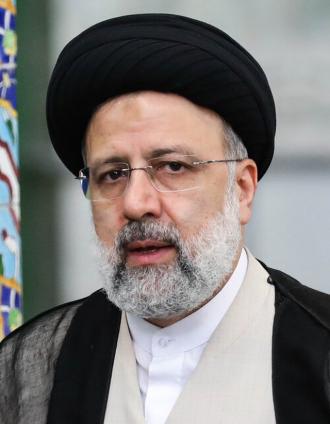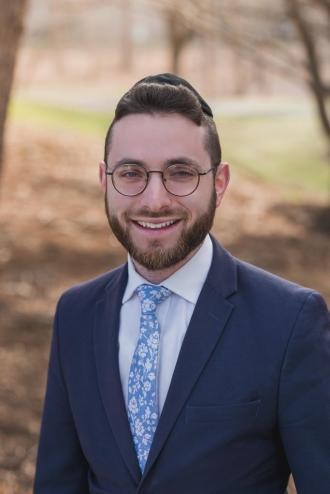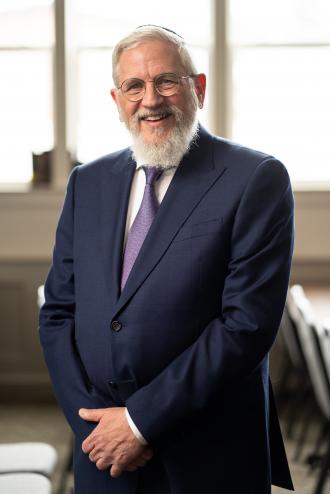יוֹסֵי בֶן יוֹעֶזֶר אִישׁ צְרֵדָה וְיוֹסֵי בֶן יוֹחָנָן אִישׁ יְרוּשָׁלַיִם קִבְּלוּ מֵהֶם.
יוֹסֵי בֶן יוֹעֶזֶר אִישׁ צְרֵדָה אוֹמֵר, יְהִי בֵיתְךָ בֵית וַעַד לַחֲכָמִים, וֶהֱוֵי מִתְאַבֵּק בַּעֲפַר רַגְלֵיהֶם, וֶהֱוֵי שׁוֹתֶה בְצָמָא אֶת דִּבְרֵיהֶם: (אבות א:ד)
יוֹסֵי בֶן יוֹחָנָן אִישׁ יְרוּשָׁלַיִם אוֹמֵר, יְהִי בֵיתְךָ פָתוּחַ לִרְוָחָה, וְיִהְיוּ עֲנִיִּים בְּנֵי בֵיתֶךָ, וְאַל תַּרְבֶּה שִׂיחָה עִם הָאִשָּׁה... (אבות א:ה)
The Zugot
After Avot’s first three mishnayot list the individuals (Moshe and Yehoshua) and groups (Zekeinim, Nevi’im, and Anshei Knesset Hagedolah) who transmitted the mesorah, the Mesechet introduces us to the zugot — the pairs who continued this chain together. As opposed to earlier and later periods, during the zugot period two people worked together on the joint mission of passing on the mesorah.[1]
The mishnah in Chagigah[2] tells us that the first of each pair was the Nasi, while the second was the Av Beit Din. The two led the community by both deciding on contemporary matters and also by relaying past mesorah to future generations.
Rashi[3] points out that these pairs were the beginning of machloket amongst the Jewish people. Divergent perspectives, and thus different opinions, concerning Torah matters developed. Despite the differences between them, though, each zug shared a certain commonality. We even see this in the similar names of the first zug — Yossi ben Yoezer Ish Tz’redah and Yossi ben Yochanan Ish Yerushalayim.
Each zug also worked together on a shared topic that they fleshed out in different ways. The two Yossi’s of the first zug teach how to build the Jewish home — “Yehi beit’cha…” Yossi ben Yoezer speaks about the home being a place of Torah, while Yossi ben Yochanan presents it as a place of chessed. The zug applies the seminal statement of Shimon Hatzaddik[4] (about the world standing on the pillars of Torah and gemilut chasadim) to the context of the home.[5]
A Torah Home (Yossi Ben Yoezer)
Yossi ben Yoezer[6] relates to the importance of Torah. His first statement directs us to be “mit’avek” in the dust at the feet of Torah scholars. We are meant to sit at their feet to learn from their Torah[7] and walk behind them to learn from their ways.[8]
His second statement encourages us to drink their words with thirst. We should utilize Torah teachings to quench the thirst we ought to have for meaning and direction.
Yossi’s first statement — “May your home be the meeting place for scholars” — connects Torah learning to the home. Many commentators explain that hosting shiurim offers family members the opportunity to learn from the wisdom[9] and behavior[10] of Torah teachers. Additionally, one can suggest that Torah events in the home define its mission and purpose — they turn the home into a makom Torah. Many gatherings and activities go on day and night in homes throughout our communities. Our homes should be ones that host Torah gatherings.
Open and Inclusive (Yossi Ben Yochanan)
Yossi ben Yochanan, the second of this zug, speaks about a different aspect of the home — it being a place of chessed. He presents this from two perspectives. The first, “Your home should be wide open,” encourages us to be inviting to all those in need. Rabbeinu Yonah[11] points to Avraham’s home as a model. The Torah[12] describes how Avraham sat outside his tent seeking guests, ran to invite them in, and rushed to serve them.[13] In order to identify and encourage the maximum number of visitors, his tent had entrances facing every direction.[14] We should learn from Avraham to be passionate about and maximize opportunities to host those in need.
Yossi ben Yochanan’s second statement, “The poor should be members of your household,” extends this idea further. One’s home should not just be open to servicing the passerby or those in occasional need. It should also include the poor as household members. This is important for two reasons. First, there are those in need of more than just occasional chessed; they need consistent or even constant support. Additionally, we should include the poor as family members because doing so defines our household as including the poor and needy.[15]
Personal Growth and Care For Others
What emerges from the teachings of this first zug is that Torah and chessed should be more than just what we do in our homes. They should be what define our homes. Hosting Torah gatherings emphasizes the importance of our family’s Torah identity and personal growth. Actively inviting guests and including the poor as household members expresses our home’s commitment to the broader community. We value not only our own growth, but also caring for those who need extra care.
Let’s make sure to build our homes on Torah and gemilut chasadim!
[1] Avot 1:4-12.
[2] Chagigah 2:2.
[3] Rashi, Masechet Chagigah Daf 16a, DH Yossi.
[4] Mishnayot Masechet Avot 1:2.
[5] Interestingly, they do not relate to Shimon Hatzadik’s third pillar — avodah. They may have felt that avodah relates more to the Beit Hamikdash and Shul.
[6] Mishnayot Masechet Avot 1:4.
[7] Avot D’Rebbi Natan 6:2.
[8] Bartenura on Masechet Avot 1:4.
[9] Ibid.
[10] Tiferet Yisrael (Yachin), Masechet Avot 1:4.
[11] Rabbeinu Yonah on Masechet Avot 1:5.
[12] Bereishit 18:1–10.
[13] The Ramban (Bereishit 18:7) explains that the Torah emphasizes Avraham’s haste to help us appreciate his passion for chessed.
[14] Midrash Sechel Tov Bereishit 18:2 (quoted by Bartenura). See also Avot D’Rebbe Natan and Rashi (on the Mishnah) who describe Iyov and Yoav as having built their tents the same way.
[15] This calls to mind the famous words of the Rambam (Hilchot Yom Tov 6:18) about how celebrating Yom Tov shouldn’t be selfish; real simchah entails including those less fortunate than ourselve in our celebration.














